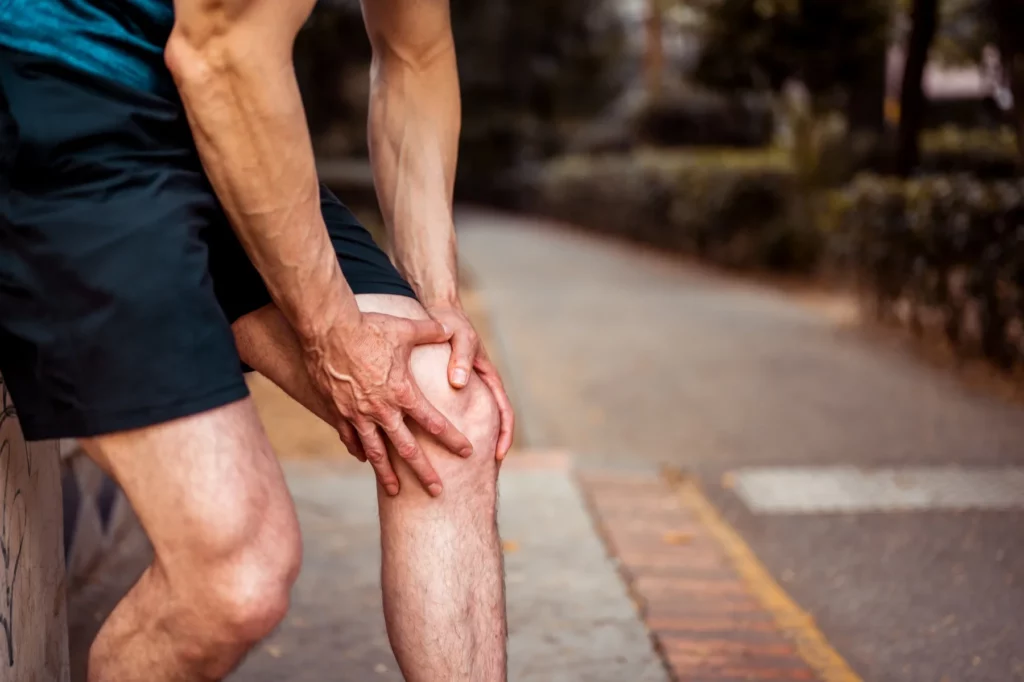Running can be exhilarating. But then it hits: that nagging twinge on the inner side of your knee, transforming each step into a painful challenge. It’s a sensation many runners know all too well. Inner knee pain can sideline even the most passionate runners, turning a source of joy into a source of discomfort. But what if you didn’t have to hang up your running shoes? Dive into our comprehensive guide on “Solving Inner Knee Pain From Running,” and discover expert remedies and tips to get you back on track, running pain-free.
Contents
Common Causes of Inner Knee Pain From Running
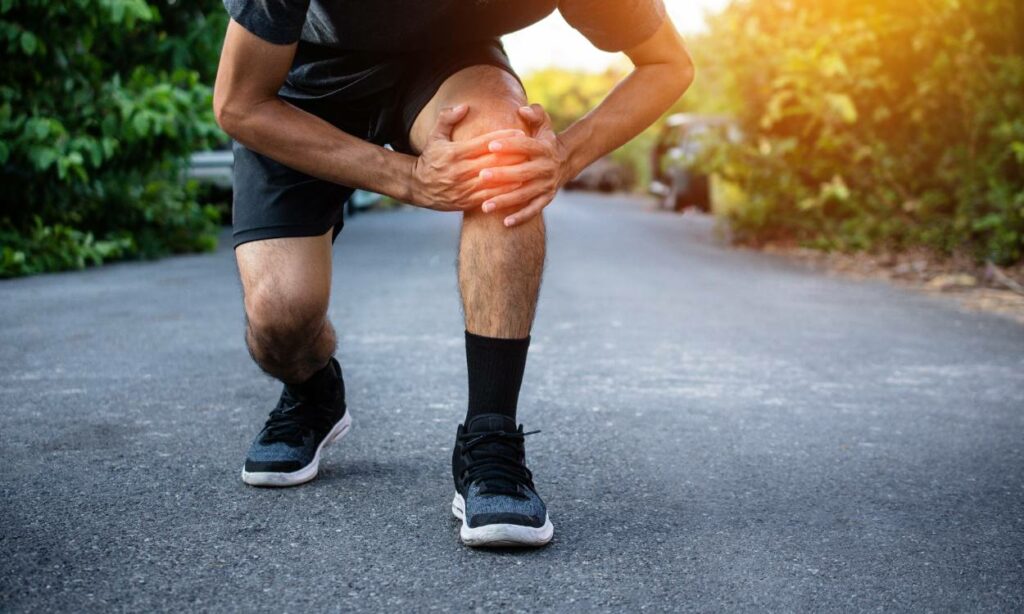
Running is a complex motion that demands synchronized coordination of multiple body parts. While it’s a great way to stay fit and active, the repetitive nature of running combined with external factors can sometimes lead to injuries, particularly in the inner knee region. Let’s delve deeper into the common causes:
Medial Meniscus Tears
The meniscus is a C-shaped piece of cartilage in the knee that acts as a shock absorber between the shinbone and thighbone. The inner side, or medial meniscus, can tear when there’s a sudden twist or turn while running, especially if the foot is firmly planted.
MCL (Medial Collateral Ligament) Injuries
Positioned on the inner side of your knee, the MCL connects the thighbone to the shinbone. A sudden change of direction, especially on uneven terrains, can strain or tear the MCL, leading to sharp pain.
Pes Anserine Bursitis
This is an inflammation of the bursa (a fluid-filled sac) located between the shinbone and three tendons of the hamstring. Overuse, especially from running uphill or on uneven surfaces, can lead to this type of bursitis, manifesting as tenderness in the inner knee.
Exacerbating Factors
While the above causes are intrinsic to the knee’s anatomy, certain external factors can increase the risk of these injuries:
- Incorrect Footwear: Running in shoes that lack proper support or are worn out can lead to an uneven distribution of weight. This can, in turn, put excessive pressure on the inner knee. Moreover, not using running-specific shoes can heighten the risk.
- Improper Running Form: A flawed running technique can impose undue stress on the knees. Overpronation (rolling the foot inward), for instance, can stress the medial structures of the knee.
- Unvarying Running Surfaces: Continuously running on hard surfaces like concrete can amplify the shock to the knees. Similarly, always running on sloped surfaces can put unequal pressure on either side of the knee.
- Skipping Warm-Ups: Jumping straight into a run without proper warm-up can make the knee structures more susceptible to injuries. Warm muscles are more flexible and can absorb the repetitive impact of running better.
In recognizing these causes and understanding the exacerbating factors, runners can take informed steps to minimize the risk of inner knee pain.
Symptoms That Shouldn’t Be Ignored
- Sharp, Stabbing Pain: A sudden, acute pain in the inner knee, especially during or after running.
- Persistent Swelling: Swelling that doesn’t subside within a few days or returns frequently.
- Locking Sensation: Feeling like the knee gets stuck or can’t move through its full range of motion.
- Instability: A sensation that the knee might give out or can’t support your weight.
- Audible Popping or Clicking: Sounds coming from the knee joint, particularly when accompanied by pain.
- Redness and Warmth: The skin over the knee appearing reddish and feeling unusually warm to the touch.
- Pain During Rest: Discomfort that persists even when not moving or putting weight on the knee.
- Limited Range of Motion: Difficulty fully straightening or bending the knee.
- Bruising: Unexplained bruising around the inner knee or the knee joint.
Ignoring these warning signs could exacerbate the injury and delay recovery.
Tips For Immediate Relief Measures From Inner Knee Pain Post-Run
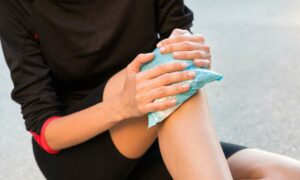 The moments after recognizing knee discomfort are critical. Taking prompt, correct actions can not only alleviate pain but also prevent potential complications. If you’re experiencing inner knee pain after running, consider these immediate relief measures:
The moments after recognizing knee discomfort are critical. Taking prompt, correct actions can not only alleviate pain but also prevent potential complications. If you’re experiencing inner knee pain after running, consider these immediate relief measures:
- Rest: Allow your knee to recover by avoiding putting weight on it. Temporarily halt running and consider using crutches if walking is painful.
- Ice: Apply a cold pack or wrapped ice to the affected knee for 15-20 minutes. This helps reduce inflammation and numb the area to reduce pain.
- Compression: Wear a compression bandage to help control swelling and provide support. Ensure it’s snug but not too tight to avoid restricting blood flow.
- Elevation: Elevate the injured knee above heart level. This helps decrease swelling by facilitating the return of blood and fluid back to the heart.
- Over-the-Counter Pain Relievers: Non-prescription pain relievers like ibuprofen or acetaminophen can help alleviate pain and reduce inflammation. Always follow dosage recommendations and consult with a healthcare professional if you’re unsure.
- Gentle Stretches: Gentle knee stretches can aid in relieving tension and improving flexibility. Here are two to try:
- Stay Hydrated: Drink plenty of water to support the body’s natural healing processes and prevent muscle cramps.
- Avoid Heat: Refrain from using heat packs or warm towels on a fresh injury, as it can increase swelling. Wait for 48 hours or until the swelling has subsided before considering heat therapy.
Remember, while these measures can offer temporary relief, it’s essential to listen to your body. If the pain persists or if the symptoms worsen, seeking professional medical advice is imperative.
Strengthening Exercises for Inner Knee Support
The foundation of a pain-free run often lies in the strength and flexibility of the muscles and ligaments supporting the knee. Strengthening these areas not only enhances running efficiency but also builds a protective barrier against potential injuries. Here are specific exercises tailored to fortify your inner knee:
Straight Leg Raises
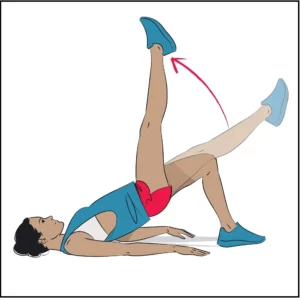
- Lie flat on your back with one leg bent at the knee and the other leg extended out straight.
- Tighten your thigh muscles and lift the straightened leg about a foot off the ground. Hold for a few seconds, then lower slowly.
- Aim for 3 sets of 10 repetitions for each leg.
Clamshells
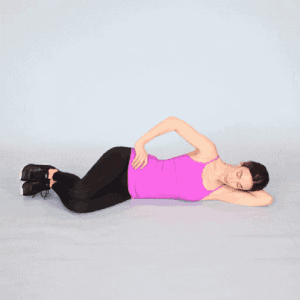
- Lie on your side with legs bent at a 90-degree angle, feet together.
- Keeping your feet touching, lift the top knee as high as you can without moving your pelvis. Lower it back down gently.
- Complete 3 sets of 12 repetitions on each side.
Side-Lying Hip Adduction
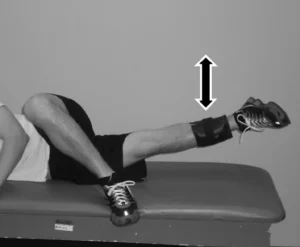
- Lie on your side with your bottom leg straight and the top leg bent behind you.
- Lift the straight leg a few inches off the ground, then lower.
- Perform 3 sets of 10 repetitions on each leg.
Terminal Knee Extensions
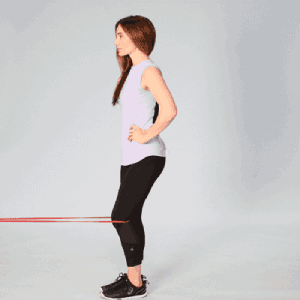
- Tie one end of a resistance band to a sturdy anchor point and loop the other end around your knee.
- Stand facing the anchor and slightly bend your knee. Extend your knee fully against the resistance, then slowly return.
- Complete 3 sets of 12 reps for each leg.
Wall Sits
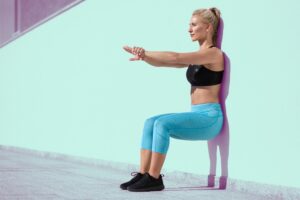
- Stand with your back against a wall and feet shoulder-width apart.
- Slide down into a squat position, keeping your back flat against the wall. Ensure your knees are directly above your ankles.
- Hold for 20-30 seconds, gradually working your way up to 1 minute. Repeat 3 times.
When to Seek Professional Help
There’s a difference between the transient soreness of a hard workout and symptoms that might indicate a more serious issue. Recognizing this distinction is crucial. So, when should you shift from self-management to seeking expert advice? Let’s delve into the specific signs that signal it’s time to consult a professional.
- Persistent Symptoms: If pain, swelling, or discomfort lingers for more than a week despite at-home remedies, it’s time to consult a professional.
- Increasing Intensity: Any symptom that worsens over time or after continued running warrants a medical opinion.
- Limited Mobility: Difficulty bending, straightening, or putting weight on the knee indicates potential severe damage.
- Previous Injuries: If you’ve had knee injuries before, seek a professional’s opinion at the earliest sign of trouble.
- Audible Noises: Persistent or loud popping, clicking, or grinding noises from the knee during movement can be indicative of internal damage.
- Instability or Locking: If your knee feels unstable or locks up, it’s crucial to get it checked.
- Ineffective Pain Medications: If over-the-counter pain relievers don’t alleviate the pain, seeking advice on alternative or additional treatments is wise.
Always remember, proactive measures and early intervention with the guidance of professionals can significantly reduce the downtime and help in maintaining the longevity of your running journey.
Conclusion
Running is a liberating experience, a celebration of the human body’s capabilities. However, inner knee pain can cast a shadow on this joy when running. Remember, you’re not alone in this journey. Solutions are available, and taking timely action can make all the difference in your recovery. If you’re experiencing Knee pain, physical therapy for knee pain at PhysioMantra can help: Book an online physical therapy session.

